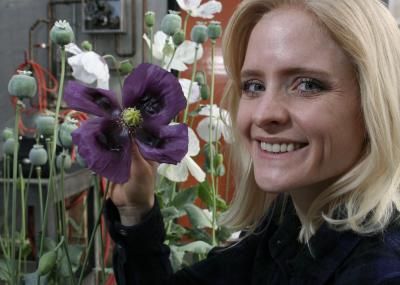Erythromycin A produced in E. coli for first time
Advertisement
Researchers at Tufts University School of Engineering have reported the first successful production of the antibiotic erythromycin A, and two variations, using E. coli as the production host.
The work, published in the November 24, 2010, issue of Chemistry and Biology, offers a more cost-effective way to make both erythromycin A and new drugs that will combat the growing incidence of antibiotic resistant pathogens. Equally important, the E. coli production platform offers numerous next-generation engineering opportunities for other natural products with complex biosynthetic pathways.
"We have now established E. coli as a viable option for making erythromycin A and as a platform for the directed production of erythromycin analogs. Our ability to fully manipulate erythromycin A's biosynthetic pathway to expand molecular diversity and antibiotic activity help sets a precedent for producing other similarly complex and medicinally relevant natural products," said lead researcher Blaine Pfeifer, Ph.D., assistant professor of chemical and biological engineering at Tufts.
Erythromycin A is a potent weapon in the treatment of bacterial infections. The bacterium Saccharopolyspora erythraea, which is found in the soil, naturally produces several variants of erythromycin. Erythromycin A is the most common and most biologically active.
Because of the challenges associated with engineering Saccharopolyspora erythraea, researchers have hoped to achieve the complete production of erythromycin A using E. coli. More than 20 enzymes must work in concert to create the erythromycin A molecule. This genetic and biochemical complexity makes synthesis notoriously hard. Previous research had reported manufacture of erythromycin A intermediates in E. coli but not the final product.
"To transfer and reconstitute these biosynthetic pathways is very difficult. In fact, erythromycin A poses nearly every challenge that must be addressed in the quest for complex heterologous biosynthesis of natural products," Pfeifer said.
He noted that the Tufts researchers followed a direction that was different from other groups. The Tufts team focused on reconstituting and ultimately manipulating the compound's original biosynthetic pathway rather than using analogous enzymes extracted from analogous pathways. The research team included Haoran Zhang, doctoral student in chemical engineering; Yong Wang, former postdoctoral associate now at East China University of Science & Technology; Jiequn Wu, a visiting doctoral student from East China University of Science & Technology, and Karin Skalina, a Tufts senior who is studying chemical engineering.
Original publication: Haoran Zhang, Yong Wang, Jiequn Wu, Karin Skalina, and Blaine A. Pfeifer, "Complete Biosynthesis of Erythromycin A and Designed Analogs Using E. coli as a Heterologous Host"; Chemistry and Biolog 2010.


















































